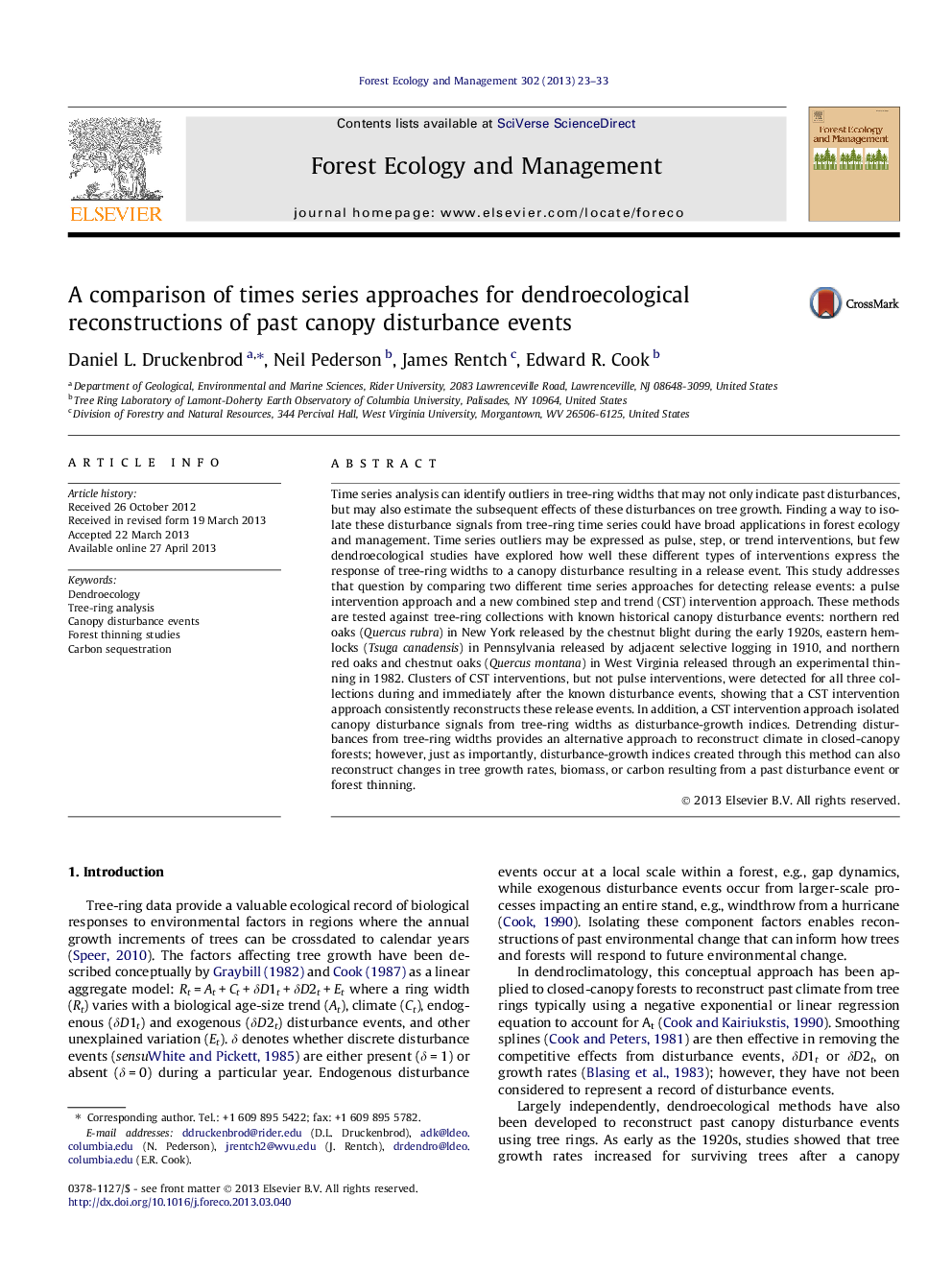| Article ID | Journal | Published Year | Pages | File Type |
|---|---|---|---|---|
| 87052 | Forest Ecology and Management | 2013 | 11 Pages |
•We present a new method for detecting past canopy disturbances in tree rings.•Disturbances were reconstructed for forests with known prior events.•Combined step and trend interventions outperformed pulse interventions.•This method isolates a disturbance signal, quantifying subsequent growth.•This signal provides broad applications by estimating growth, volume, or carbon.
Time series analysis can identify outliers in tree-ring widths that may not only indicate past disturbances, but may also estimate the subsequent effects of these disturbances on tree growth. Finding a way to isolate these disturbance signals from tree-ring time series could have broad applications in forest ecology and management. Time series outliers may be expressed as pulse, step, or trend interventions, but few dendroecological studies have explored how well these different types of interventions express the response of tree-ring widths to a canopy disturbance resulting in a release event. This study addresses that question by comparing two different time series approaches for detecting release events: a pulse intervention approach and a new combined step and trend (CST) intervention approach. These methods are tested against tree-ring collections with known historical canopy disturbance events: northern red oaks (Quercus rubra) in New York released by the chestnut blight during the early 1920s, eastern hemlocks (Tsuga canadensis) in Pennsylvania released by adjacent selective logging in 1910, and northern red oaks and chestnut oaks (Quercus montana) in West Virginia released through an experimental thinning in 1982. Clusters of CST interventions, but not pulse interventions, were detected for all three collections during and immediately after the known disturbance events, showing that a CST intervention approach consistently reconstructs these release events. In addition, a CST intervention approach isolated canopy disturbance signals from tree-ring widths as disturbance-growth indices. Detrending disturbances from tree-ring widths provides an alternative approach to reconstruct climate in closed-canopy forests; however, just as importantly, disturbance-growth indices created through this method can also reconstruct changes in tree growth rates, biomass, or carbon resulting from a past disturbance event or forest thinning.
